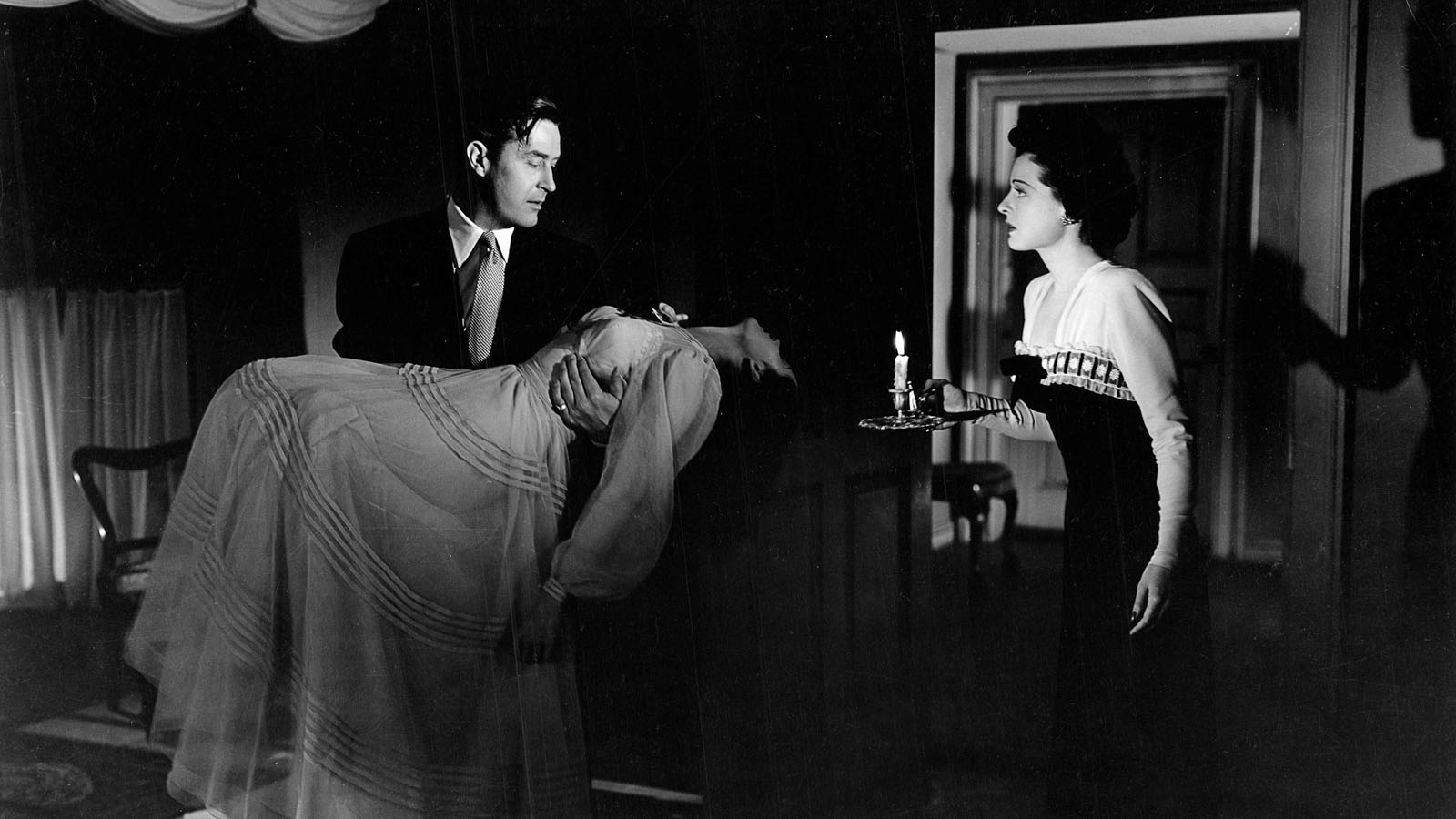A Ghost Story and More

As noted yesterday, this year’s awards season is now open. To the first round of early nominations for the best of what 2019 has had to offer we can add a batch of announcements from Cinema Eye Honors, which recognizes top work in nonfiction film. We’re naturally happy to see that the 2019 Legacy Award will go to Koyaanisqatsi (1983), and on January 4, director Godfrey Reggio will be on hand for a special screening at New York’s Museum of the Moving Image.
This will be the last Friday roundup before Halloween, so let’s start with a ghost story.
- In his latest Queer & Now & Then column for Film Comment, Michael Koresky looks back on a cult favorite from 1944. “The chic lesbianism that was so prevalent in early ’30s Hollywood—especially pronounced and unabashed in the decade’s pre-Code years—among such star personas as Marlene Dietrich, Greta Garbo, and Katharine Hepburn, seemed to have found its opposite reaction in the ’40s figure of the threatening woman, her strength connected somehow to transgression or perversity,” he writes. As examples, he offers Judith Anderson’s Mrs. Danvers in Alfred Hitchcock’s Rebecca (1940), Simone Simon’s Irena in Jacques Tourneur’s Cat People (1942), and a few other women in Val Lewton productions. “Yet it is Paramount’s Lewis Allen–directed haunted house movie The Uninvited that is perhaps the most startlingly overt example of the subgenre, its phantom lesbianism almost exhilarating in how it makes its subtext almost visible.”
- The Wizard of Oz has turned eighty this year, prompting historian Amy Kenyon to take a long and leisurely wander through the legacy of this walking road movie for Bright Lights Film Journal. She considers the film’s impact on writers as varied as John Updike and Michael Chabon and on filmmakers such as David Lynch and Joel and Ethan Coen, while for herself, “it was Dorothy who gave me a girl’s version of our peculiarly American restlessness. To live is to constantly wonder whether to stay or go. To live is to feel perpetually torn between Kansas, the Emerald City, and the Yellow Brick Road itself.”
- With The Irishman opening next month, we’ll likely be hearing quite a bit from Martin Scorsese in the coming weeks. He pops up in Dave Itzkoff’s profile of the film’s stars, Robert De Niro and Al Pacino, with an almost poetic assessment of the actors’ dissimilar approaches to their craft: “I suppose I could say that Al tends to go toward fluidity and music while Bob likes to locate states of mind and being, settling in.” Meantime, the Guardian’s posted Scorsese’s appreciation of Lou Reed. The director and the musician bonded over their admiration for poet Delmore Schwartz, and to this day, Scorsese would like to make a film based on Schwartz’s short story “In Dreams Begin Responsibilities.” Reed’s lyrics are “essential New York speech,” writes Scorsese, “and it feels so close to what I was always trying to do in my own pictures.”
- A season of films by the late Ukrainian director Kira Muratova at London’s Close-Up Film Centre wraps tomorrow with a screening of Eternal Homecoming (2012). The outstanding program notes come from Elena Gorfinkel, who writes that Muratova’s “trenchant, sonically layered, and furiously sensorial cinema spans twenty-one films made over six tumultuous decades, products of her bracingly original cinematic imagination, one as distinct as Varda’s, Akerman’s, or Chytilová’s.”
- For Hyperallergic, Dessane Lopez Cassell talks with Kevin Jerome Everson, who has made more than 170 films, one of which, Black Bus Stop, codirected with Claudrena N. Harold, has just screened at the New York Film Festival. Everson is not only a filmmaker; he’s also a street photographer, a sculptor, a printmaker, and a professor at the University of Virginia. “I teach film like a DJ,” he says, “I never teach the whole film, I just pick up things we could use.” At the bottom of the conversation, you’ll find Everson’s ten-minute short Ears, Nose and Throat (2016), which Cassell calls “a quiet but potent condemnation of society’s built-in skepticism of the Black experience, and especially of its continual silencing of Black women.”
For news and items of interest throughout the day, every day, follow @CriterionDaily.



